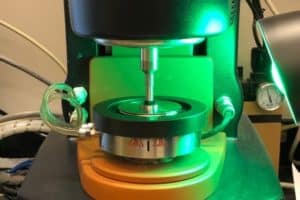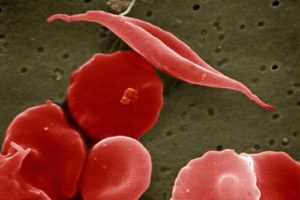polymer
Creasing to cratering: Voltage breaks down plastic
DURHAM, N.C. — A Duke University team has seen for the first time how soft polymers, such as wire insulation, can break down under exposure to electrical current.
Researchers have known for decades that polymers, such those insulating wires, m…
Universal solvent no match for new self-healing sticky gel
Scientists can now manufacture a synthetic version of the self-healing sticky substance that mussels use to anchor themselves to rocks in pounding ocean surf and surging tidal basins. A patent is pending on the substance, whose potential applica…
New method for rapidly producing protein-polymers
DURHAM, NC — Duke University bioengineers have developed a new method for rapidly producing an almost unlimited variety of man-made DNA sequences.
These novel sequences of recombinant DNA are used to produce repetitive proteins to create new…
Muscle filaments make mechanical strain visible
Plastics-based materials have been in use for decades. But manufacturers are facing a serious hurdle in their quest for new developments: Substantial influences of the microscopic material structure on mechanical material properties cannot be ob…
A new kind of blast-resistant glass
Whether in a hurricane, tornado, or bomb attack, a leading cause of injury and death is often fast-flying shards of glass. Explosions and high winds can cause windows in buildings to shatter-spewing jagged pieces of glass in every direction. …
New method for simple fabrication of microperforated membranes
Washington, D.C. (November 9, 2010) — Microscopically porous polymer membranes have numerous applications in microfluidics, where they can act as filters, masks for surface patterning, and even as components in 3D devices in which the perforations …
Transparent conductive material could lead to power-generating windows
UPTON, NY – Scientists at the U.S. Department of Energy’s (DOE) Brookhaven National Laboratory and Los Alamos National Laboratory have fabricated transparent thin films capable of absorbing light and generating electric charge over a relatively larg…
Bricks made with wool
Spanish and Scottish researchers have added wool fibres to the clay material used to make bricks and combined these with an alginate, a natural polymer extracted from seaweed. The result is bricks that are stronger and more environmentally-frien…



